North Korea summit: Diplomacy is back on track
- Published

All smiles and optimism in Pyongyang between Moon Jae-in (left) and Kim Jong-un
The year of dramatic inter-Korean diplomacy continues apace. On Wednesday, South Korean President Moon Jae-in and North Korean leader Kim Jong Un surprised the world with a set of summit outcomes that exceeded expectations, writes North Korea analyst Ankit Panda.
Symbolically, both leaders conveyed a sense that their rapprochement was destined to continue.
Beyond the practical outcomes on economic co-operation and reduction of military tensions, Kim announced he would accept an invitation to visit the South Korean capital, Seoul, and that he and Moon on Thursday would travel to Mount Paektu, which holds a central place in the country's mythology.
Moon, meanwhile, achieved an important objective by securing concessions from Kim related to limiting his country's nuclear and ballistic missile programs.
Diplomatic process back on track
The concessions, to be sure, are not particularly costly for North Korea and do not set it on the path towards nuclear disarmament, but will bear particular significance in their ability to reinvigorate the stalled diplomatic process between South Korea's ally, the United States, and North Korea.
Mr Moon announced that Kim would dismantle the Tongchang-ri facility, also known as the Sohae Satellite Launching Station - a well-known site associated with various aspects of the country's space and ballistic missile programs.
The war that never officially ended
Mr Kim had conveyed the North's intent to dismantle certain facilities there, including a static test stand for liquid propellant engines for rockets, at the June summit with US President Donald Trump. Satellite imagery showed some dismantlement work had begun.
What is perhaps most significant about the declaration on Tongchang-ri is that North Korea will be inviting international experts to observe and verify the dismantlement activity at the site.
Missile threat remains
The closure of Tongchang-ri won't disrupt North Korea's ability to mass produce ballistic missiles or warheads, but it will serve as an important confidence-building measure.
Importantly, North Korea has completed development work on its large liquid propellant engines for intercontinental-range ballistic missiles.
The manufactured missiles will remain in its arsenal and any future missiles it manufactures can have their engines tested and proven elsewhere.
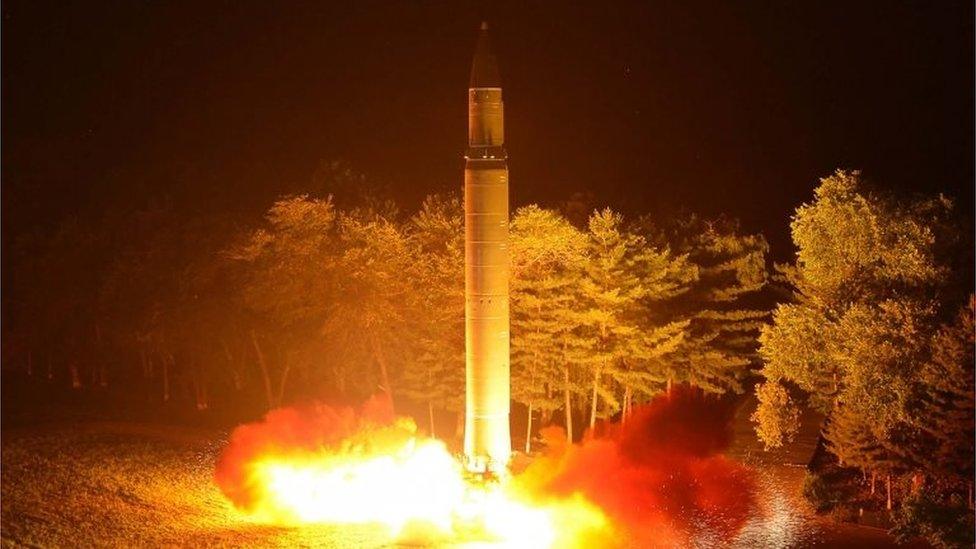
The North's military threat is not diminshed
Separately, it can explore the possibility of moving to mobile launchers for future satellite launches, as Israel and China have done with certain satellite launches. This would allow it to offer up Sohae on a platter as a concession, but retain its space program.
Beyond Tongchang-ri, Mr Moon announced an unexpected potential concession: North Korea would be willing to permanently shut down its well-known nuclear facilities at Yongbyon.
However, this concession was not without conditions. Moon said that this would require corresponding measures from the United States in line with the June declaration agreed by Trump and Kim.
Translated, this implies US progress toward normalising diplomatic relations with North Korea and supporting a declaration to end the Korean War.
A real shift in the mood
While the concessions and developments related to North Korea's nuclear complex and missile programs were significant, the big announcement at the summit related to conventional arms control between the two Koreas.
As had been widely anticipated in the lead-up to the summit, the two sides announced joint measures to reduce and manage tensions along the disputed Northern Limit Line and along the Demilitarised Zone.
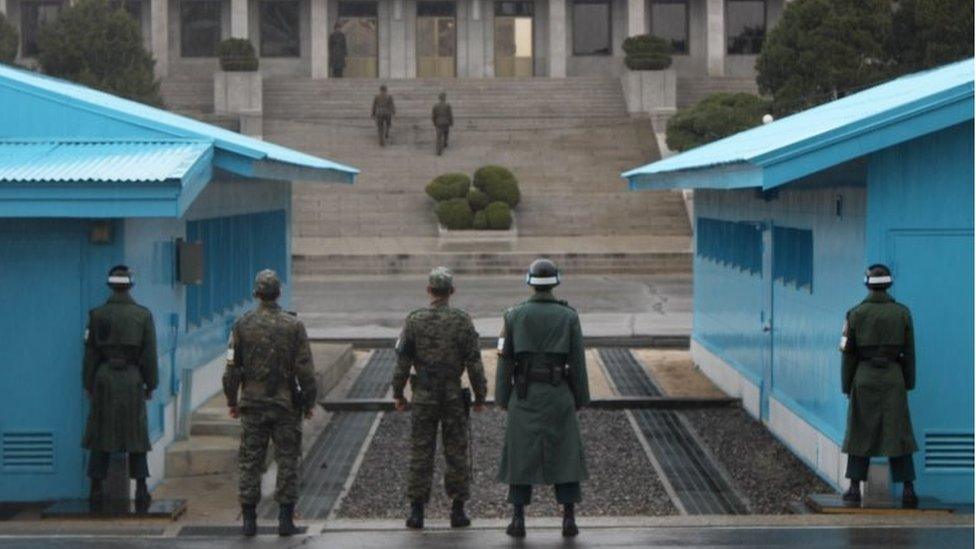
Both sides hope to scale down border tensions
These concessions had long been in the works through working-level military-to-military talks and represent a real shift in the mood along their often-tense border.
The next most important summit to watch closely will be the 25 September meeting between Mr Moon and US President Donald Trump in New York. The meeting will provide an opportunity for Mr Moon to brief the US president and, more significantly, draw him back to the negotiating table with North Korea.
A chance for diplomacy
As Pyongyang has observed, Mr Trump himself has been positive about the diplomatic process with North Korea, but his deputies, including Secretary of State Mike Pompeo, Secretary of Defence Jim Mattis, and National Security Adviser John Bolton, have voiced reservations about North Korea's progress on denuclearisation and calls by both Koreas for the United States to sign on to a declaration to end the Korean War.
Mr Moon's meeting with President Trump may pave the way for a second Trump-Kim summit meeting, allowing the United States and North Korea to work through the current logjam in the denuclearisation process.
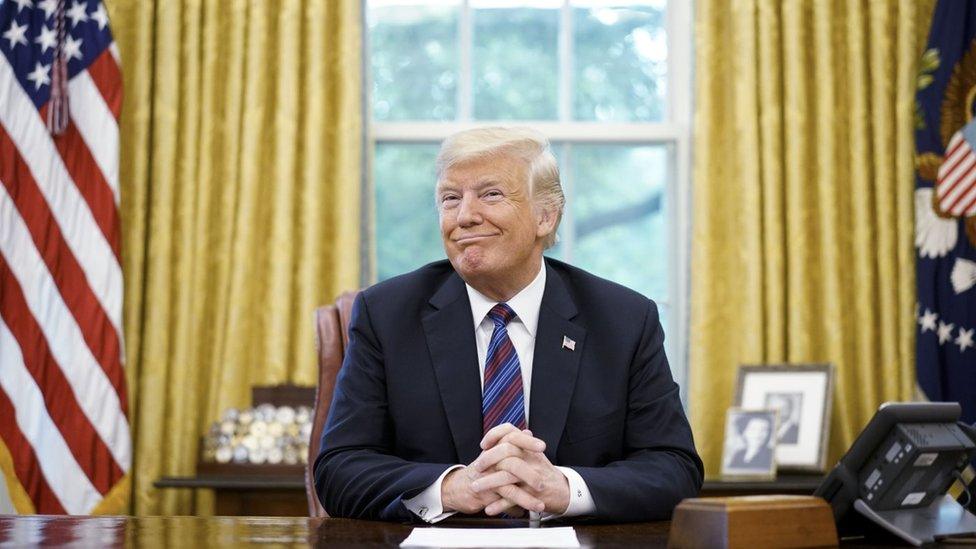
Mr Trump insists he is optimistic about North Korea
Mr Trump has welcomed the result of the outcome of the summit on Twitter already and lauded Kim Jong-un's gesture to leave nuclear-capable missiles out of the 9 September military parade to commemorate the country's 70th founding anniversary.
Moon Jae-in might just be able to convince the US president to give Kim Jong-un another chance with diplomacy.
Ankit Panda is an adjunct senior fellow at the Federation of American Scientists and a senior editor at The Diplomat.
- Published18 September 2018
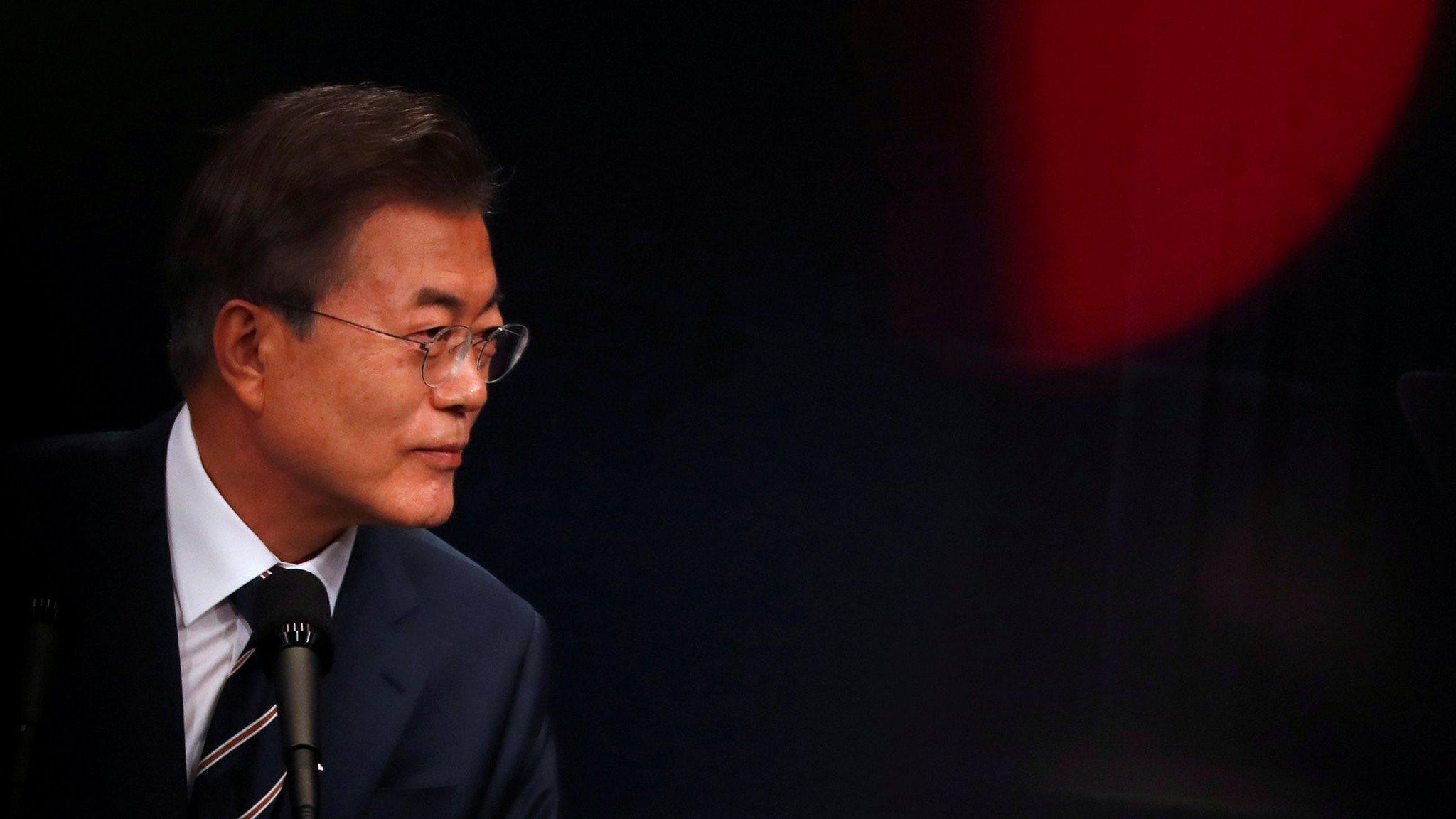
- Published19 September 2018
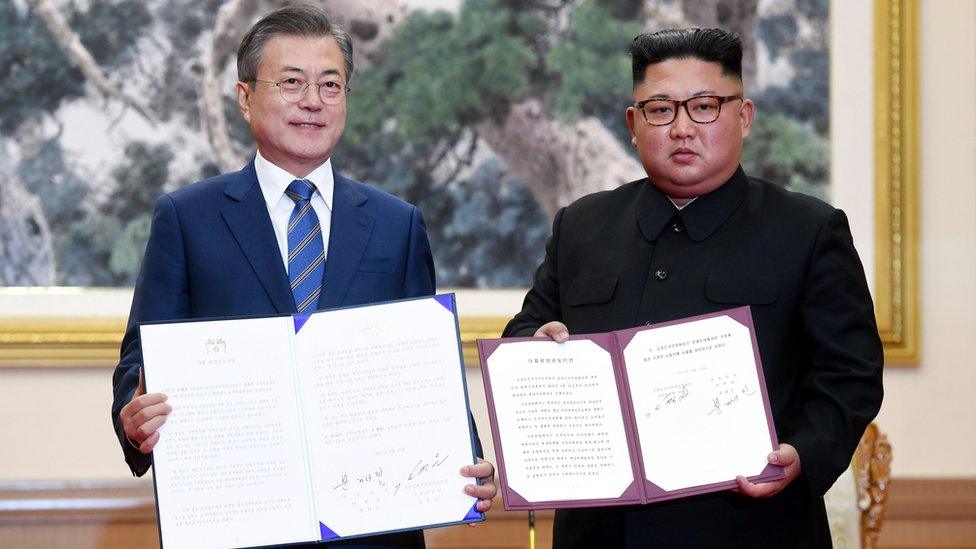
- Published18 February 2019
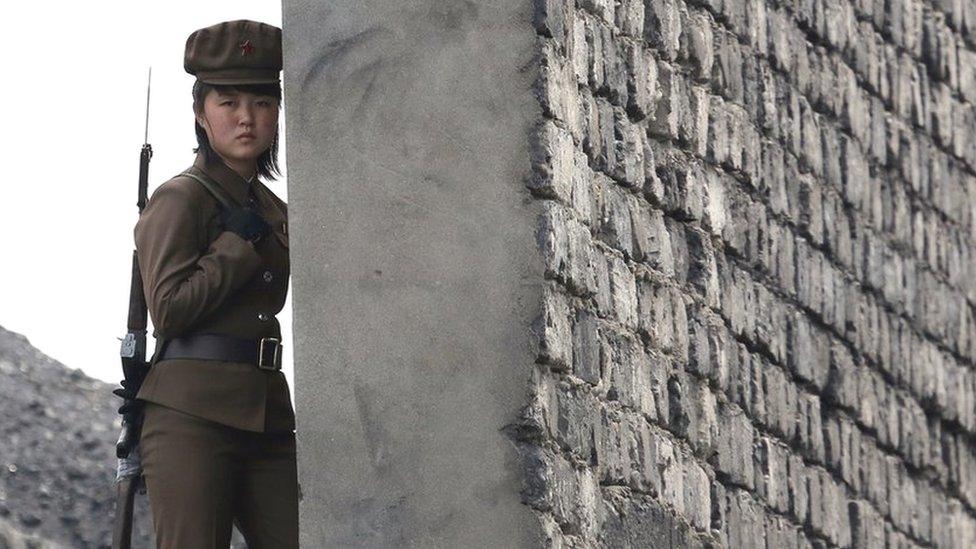
- Published19 September 2018
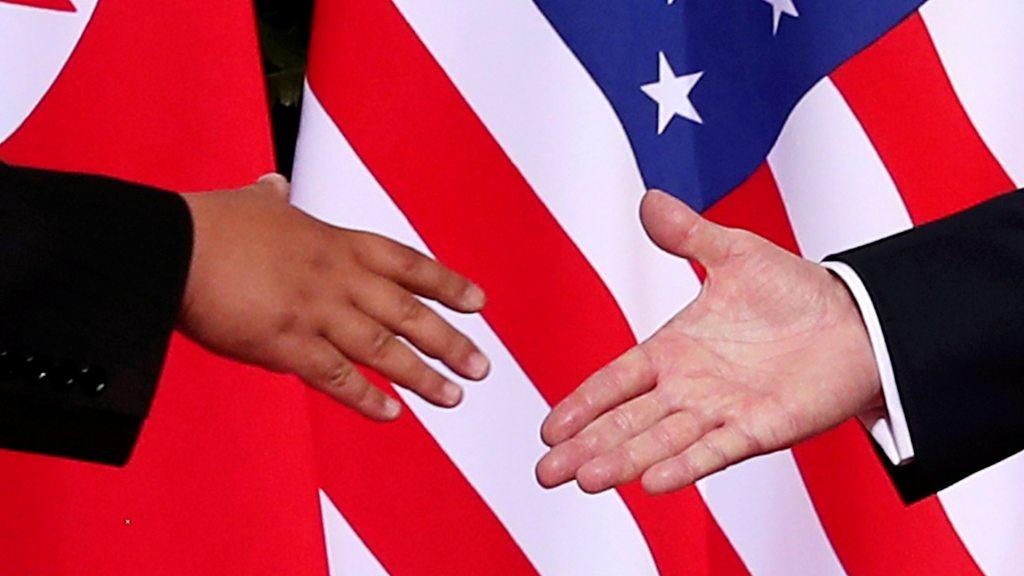
- Published23 June 2018

- Published14 June 2018

- Published7 September 2018
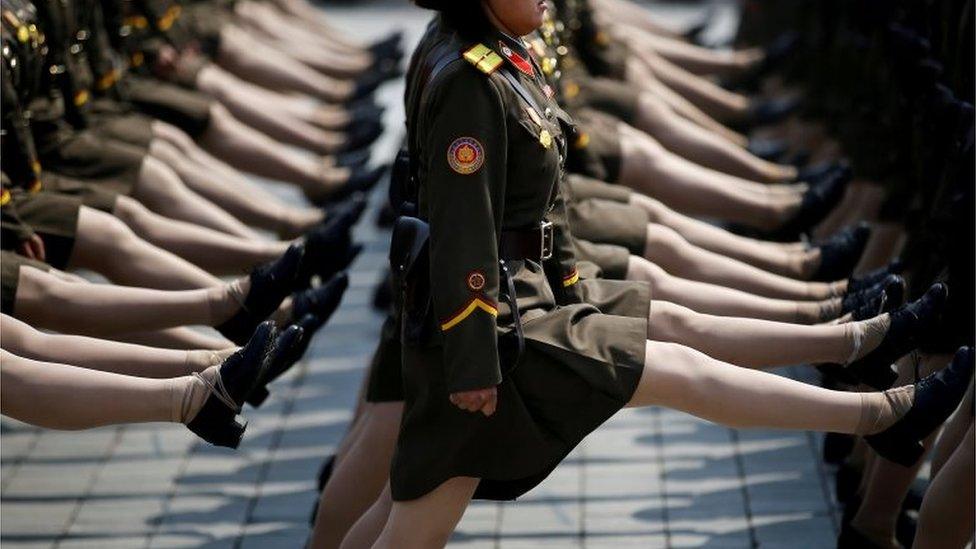
- Published21 August 2018